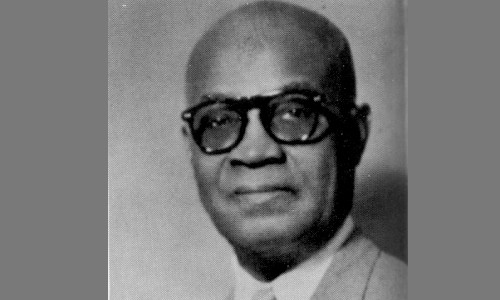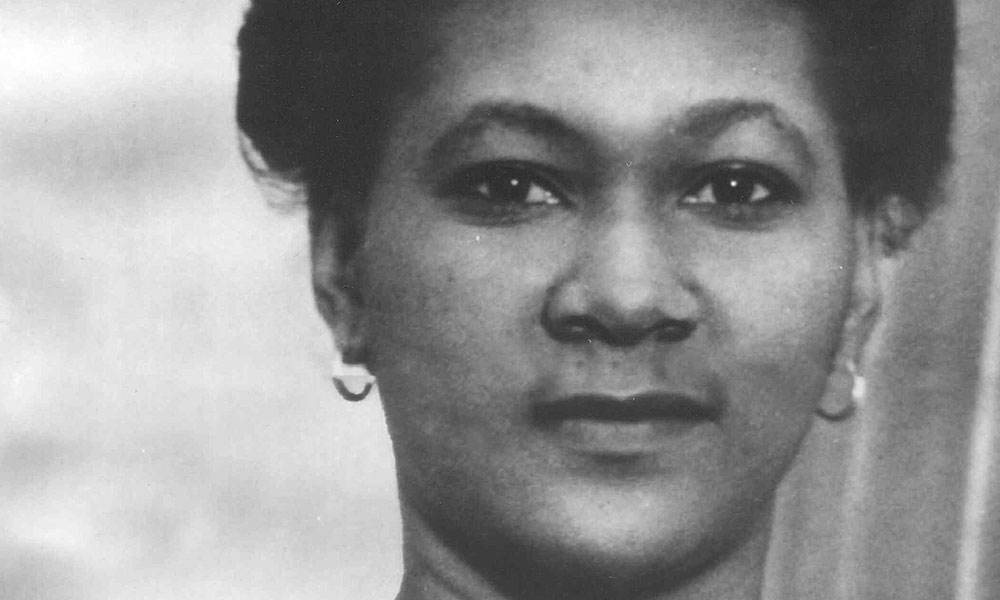
Robert (registered as Isaac Lewis) Douglas was born in St. Kitts on the 4th November 1882. He was the son of Robert Gould Douglas, a clerk, and his wife Margaret, residents of New Town. By the 1890s St. Kitts was experiencing serious social and economic difficulties that culminated in the violent disturbances of 1896, known as the Portuguese Riots. For many migration in search of work was the only option. Douglas was among the many Kittitians who made the move.
Douglas arrived in Harlem, New York in 1901. He settled in West 52nd Street and found work as a doorman at Columbus and 84th Street. He worked 12 hours a day, seven days a week with every third Thursday and Sunday off, all for a wage of $4 a week. In 1905, during one of his days off, he was invited by a fellow doorman to see a basketball game on West 59 Street, in a gym five flights off the street. He thought it was “the greatest thing in the world.... You couldn’t keep me off the court after that.”
Douglas loved sports and like many who grew up in New Town, he was a good swimmer. Basketball was new to him. He played it enthusiastically if not skilfully. Soon he quit his doorman’s job and started a Caribbean Athletic club promoting various sports but with a particular emphasis on cricket, a game he would have enjoyed in his home in the West Indies. He also played for the Spartans Cricket Club who played other Black clubs in New York.
It was difficult at the time for black persons to become professional sports men. Discrimination barred them from participation in major teams and professional leagues. The only way out of this situation was for black people to organise their own sports clubs. However Douglas soon became disenchanted with amateur basketball as he was not allowed to keep players who had received money for playing other sports. In 1923, he launched the first black professional basketball team.
That year he approached, William Roche another West Indian who had prospered through real estate. In 1922 Roche built a two storey entertainment centre which he called the Harlem Renaissance Casino. The first floor was a movie theatre and the second floor was a ballroom that was rented out for dances, dinners and shows. Douglas wanted to rent the ballroom for a basketball game every Sunday night and for practice sessions. At first Roche was worried that that kind of activity would ruin his beautifully polished dance floor but when Douglas offered to name his team the Renaissance he saw a chance of some serious publicity and agreed to the allow the team to play.
As basketball was not then a major attraction, Douglas arranged for his team play with the dance bands. This meant that patrons enjoyed several hours of dancing and a basketball game in the same night. Portable baskets where installed in front of the bandstand and folding chairs along the side-lines and on the 30th of November 1923, the Harlem Renaissance met their first challengers the Chicago Collegians whom they beat with a score of 28 to 22. Douglas later explained, “They’d stop dancing while you played, While the team rested, they danced some more, then after the game they danced some more.”
In the 1920's basketball was more of a team sport. Fifty years later, Douglas reminisced, “years ago a man wouldn’t dare try to take a ball up-court without passing to a fellow player. If a player had started that one-on-one stuff you see so much of today, I would have yanked him right away. We called that hogging the ball.” The game was slower but changes were being made which turned it into the fast game that it is today. The size of the ball was decreased and its laces began to disappear so that it became easier to dribble and the centre jump after each basket was eliminated. As a result, the Rens became a “fancy passing team that moved the ball around with such wizardry and deception that the opposition sometimes seemed helpless and beleaguered.”
During their first years the Rens played in New York City. Gradually they spread their activities further afield into the South and Midwest. By the late 1920s Douglas, coach and road-manager Eric Illidge and the team travelled by bus across the US maintaining a hectic schedule of a game a day and twice on Sunday, often playing more than 120 games annually. They took on all comers - professional, semi-pro and black college. As the first all-black professional basketball team they were pioneers. Their presence and the skills they exhibited were often a statement that spectators and rival teams did not always like. Their games against the Original Celtics were crowd pullers often drawing as many as 15 000 spectators. Civil on the court, the games between the two teams were often accompanied by race riots. Douglas and his team stirred away for trouble as much as they possibly could.
The Celtics were a team that revolutionised basketball. The Rens learnt from their tactics and often used them against other teams and later against the Celtics themselves. By then the younger, more agile, black team had the advantage. A true business man, Douglas kept close watch on the takings for the night. Coach Illidge carried a tabulator to count the gate as Douglas stipulated that the team would not play unless Illidge had the team’s share in his hands. Realising that performance was what brought in the crowds, Douglas gave his team additional incentives.
As no professional league would accept a black basketball team in its ranks, Douglas and the Rens became barnstormers of necessity. To avoid discrimination and the violence that often accompanied it, they would not accept food or lodging while on the road. Instead they would drive long journeys to and from matches or they slept and ate on their team bus when they could not find safe accommodation. The bus was another demonstration of Douglas’ business sense. The Blue Goose, was a customised bus, with reclining seats and equipped to carry food. It meant that the team arrived at an event more rested and that they could avoid the racist indignities that they were bound to run into during their travels.
Douglas and his team did their talking from the ball court. In 1932 they won 88 straight games in one remarkable 86 day stretch. Between 1932 and 1936, the team had a record of 473 to 49 games. In March 1939 they defeated the National Basketball League champions, Oshkosh All-Stars 34-25 and captured the championship at the first World Professional Tournament in Chicago. The Evening Telegram raved, “They are the champions of Professional basketball, it is time we dropped the “coloured” champions’ title.”
After the victory, Douglas bought jackets for the team to celebrate the triumph. The Jacket read NY Rens Colored World Champions. For the careful Douglas it was a compromise title which celebrated the victory without antagonising racists fans of the game. Team member John Isaacs, however was younger and less cautious. With a razor borrowed from Douglas himself he carefully scraped off the word colored.
During the World War II, travel restrictions put an end to the hectic routine that the Rens had engaged in. Douglas suspended play for the duration and then tried to regroup when the war was over. By then many of his players had moved elsewhere. When the American Basketball League was formed he managed to get the team included in 1948. As part of the agreement, Douglas had to move his team to Dayton, Ohio where they played their last game in 1949.
Douglas’ pioneering venture earned him the title of Father of Black Professional Basketball. Douglas’ influence and the impact of his Rens continued to be felt in the years following the team’s disbandment. Together they showed that African-Americans could run a successful athletic organisation despite the racist environment in which they functioned. In 1972 Douglas became the first black man to be inducted into the Hall of Fame. Robert Douglas died on the 16th July 1979.




